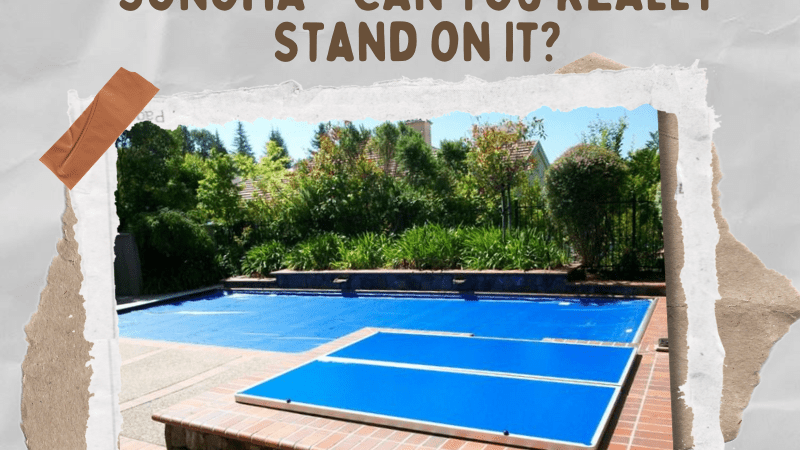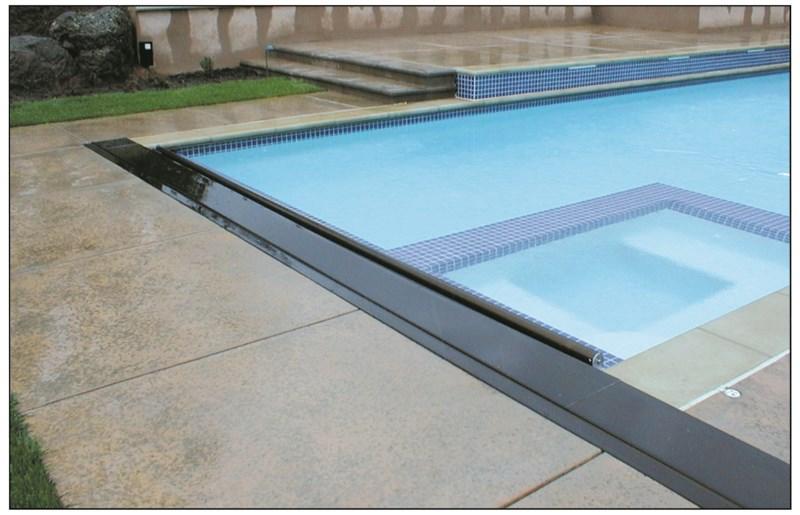
If you have small children or pets in the house, or soon will, having an open pool in your backyard can be a danger zone. Pool safety is every pool owner’s chief concern, other than maintenance. Barriers, such as safety pool covers in Sonoma, make kids and pets safer.
Factors to consider when buying a safety pool cover
Strength and durability are essential considerations for pool owners when looking for a safety pool cover. While many durable pool covers are available, not all are designed for safety purposes.
So, how would you know if a pool cover is the “safety” type? Consider the following factors to ensure it meets safety standards, fits your pool area correctly, and suits your maintenance and usage needs.
1. Safety standards (ASTM standard)
The American Society for Testing and Materials (ASTM) F1346-91 is a widely recognized safety standard for pool covers. For a cover to meet this standard, it must:
- Support a specific weight: This means the cover should support at least 485 pounds, roughly the weight of two adults and one child. This weight capacity prevents accidental falls through the cover if someone steps or falls onto it. It means not one but three people with average weights can stand on the pool cover, which can be crucial in emergencies.
- Prevent access to the pool: It must be designed to prevent a child from getting under the cover and into the pool.
- Resist gaps: The cover should fit securely around the pool perimeter to prevent children or pets from slipping through the sides.
- Durability in adverse conditions: It must withstand wear and tear from varying weather conditions, such as snow, rain, and sun, maintaining its integrity over time.
2. Material quality
- Mesh vs. solid covers: Pool covers come in two main types—mesh and solid.
- Mesh covers: Lighter and often easier to handle, they allow water to drain through while blocking debris, making them good for rain-prone areas.
- Solid covers: Block all sunlight, preventing algae growth. Some come with built-in drainage panels to prevent water accumulation.
- Durability: Look for high-grade materials, such as reinforced vinyl or durable polyethylene. Solid covers typically last longer but can be heavier and may require pumps to remove standing water.
3. Climate compatibility
- If you live in an area with heavy snowfall, a high-strength mesh cover with high weight tolerance is preferable to manage the extra load. For warmer, sunny areas, a solid cover can help reduce evaporation and chemical loss.
4. Shape and size of the pool
- Pool covers should fit snugly over your pool. Many covers are custom-made for odd-shaped pools, but you can also find standard sizes for typical rectangular, round, or oval pools. Accurate measurements ensure a secure fit and avoid safety hazards.
5. Ease of use and maintenance
- Installation and removal: Some pool covers have user-friendly features such as tension springs, straps, or automatic systems, making it easy to put on or take off. Others may require manual effort, so consider your preferred convenience level.
- Maintenance requirements: Solid covers require regular water removal if not equipped with drainage. Mesh covers require less maintenance but might let some dirt through, meaning more cleaning is necessary when opening the pool.
6. Anchoring system
- Look for sturdy anchoring systems that secure the cover firmly to the pool deck. Many safety covers use stainless steel or brass anchors for durability. These should resist corrosion, especially if you have a saltwater pool, and provide a firm and sturdy grip to withstand accidental load and weather conditions.
7. Cost and warranty
- Budget and warranty: Safety covers can vary significantly in price depending on material, size, and features. Investing in a high-quality cover usually offers better protection and longevity. Check for warranties as they indicate the manufacturer’s confidence in the product’s durability.
8. Safety features for pets and small animals
- If you have pets or are in an area with small wildlife, consider a pool cover designed to keep smaller animals out of the water, offering animal safety and reduced pool contamination.
You can stand on a safety pool cover, but…
Considering some points like durable material, sturdy anchoring system, and ASTM certification, you can ensure the pool cover can hold a specific weight. It should float on the water and evenly distribute the weight that holds it.
Nevertheless, it is NOT ADVISABLE to stand or walk on the pool cover except in cases of emergency. When you must walk on the pool cover, never bring anything sharp that could damage it, such as stiletto heels or sharp small rocks.
The pool cover should not have leaks, stagnant rainwater, snow, or other debris on the cover’s surface so that it can support weight. As you can see, anything on the pool cover unchecked will result in its diminished quality and supporting ability.
Parting words
Selecting a pool cover involves balancing safety, material, and convenience with adherence to ASTM standards. This approach helps ensure that your pool cover effectively provides the desired protection for family and pets while being easy to maintain over time.
Pool Covers, Inc. aims to provide our customers with top-notch products and quick, efficient installation services. We install the finest automatic pool and spa cover systems available in California. For consultation and assistance, please contact us at 707-864-6674 or customerservice@poolcoversinc.com.










